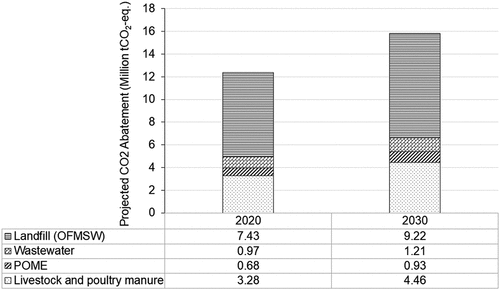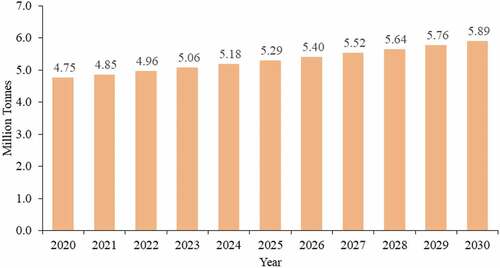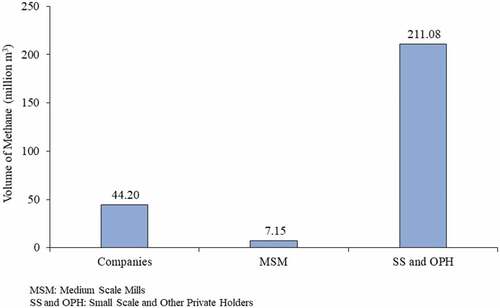Figures & data
Table 1. Basic information about Ghana (GLSS, 5., Citation2008; Mohammed et al., Citation2013; UNDP, Citation2019)
Table 2. Selected livestock production data for Ghana (head) (FAO, Citation2019)
Table 3. Biogas potential of livestock and poultry manure (Arthur, Baidoo, Antwi et al., Citation2011; Mittal et al., Citation2018; Tauseef et al., Citation2013)
Table 4. Biogas requirement for various applications (Arthur & Baidoo, Citation2011; Bora et al., Citation2014; Itodo et al., Citation2007; Kossmann et al., 1999; Tauseef et al., Citation2013)
Table 5. Crude palm oil production estimates (Mt)(SRID, Citation2016)
Table 6. Typical POME characteristics
Table 7. Input parameters for estimating methane potential from the POME produced in Ghana
Table 8. Methane and electric energy production potential, as well as avoidable GHG emissions from Livestock and poultry manure for 2020 and 2030
Table 9. Projected residential firewood demand for cooking in Ghana for 2020 and 2030 based on the BaU scenario (EnergyCommission, Citation2019b)
Table 10. Energetic potential of methane and CO2 emissions avoidance of possible landfills
Table 11. Energetic potential of methane and CO2 emissions avoidance of possible wastewater treatment plants from 2020 to 2030
Figure 3. Projected volume of methane available from landfills, livestock manure, wastewater and POME in Ghana for 2020 and 2030
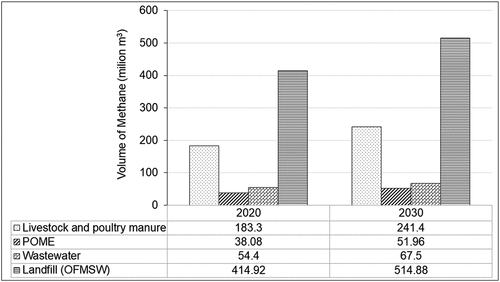
Figure 4. Projected electrical energy potential from methane available from landfills, livestock manure, wastewater and POME in Ghana for 2020 and 2030
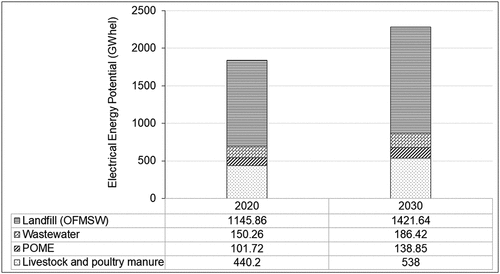
Figure 5. Projected CO2-eq. abatement potential from methane available from landfills, livestock manure, wastewater and POME in Ghana for 2020 and 2030
